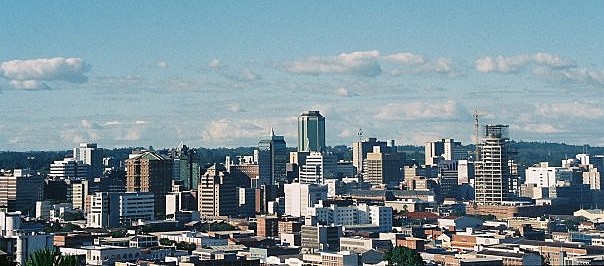What Zimbabwe’s coup looked like
An eye-witness account from Harare
For the average Zimbabwean grinding out a living in our difficult economy, Wednesday was not an ordinary day.
Many people were still coming to terms with the unexpected sacking of vice president Emmerson Mnangangwa. Then, early in the morning a heavy presence of the army on the streets of Harare signalled danger. The army seized control, essentially ousting President Robert Mugabe, who has been in power for 37 years since independence from Britain in 1980.
Captured state-broadcaster Zimbabwe Broadcasting Corporation (ZBC), announced the military takeover early in the morning, the culmination of events that started to become apparent on Tuesday evening, when military vehicles headed towards the capital. Army spokesperson Major General Sibusiso Moyo said on national television the takeover was temporary, and meant to restore order in the ruling Zanu-PF party.
After that, the television station played military songs until evening.
On the streets of Harare, we saw heavily armed soldiers on foot, backed by tanks, take control of key government institutions.
They blocked roads leading to key centres of power such as Parliament, the President’s offices at Munhumutapa building, High Court and Supreme Court, as well Defense House, the head office of the Zimbabwe Defence Forces.
Some workers at Parliament, including uniformed police officers, were forced to sit on the ground for hours in a single file.
An armed soldier in full combat gear controlled traffic coming into town. He looked angry, and dressed for war. The sight of the serious-looking youthful soldier was frightful to many passers-by. Motorists, accustomed to daily harassment by corrupt traffic police for whom they have lost respect, sheepishly complied with a single soldier’s directives.
From a balcony at a building in the heart of the city, we saw soldiers turning away vehicles from using the blocked roadways.
Pedestrians passed through freely, although, in some instances, were forced onto the ground, to sit on the rain-soaked tarmac.
Harare’s central business district, infamous for its chaotic set-up caused by innumerable streets vendors and public mini-buses, looked like a ghost-town. The streets were largely deserted. Downtown Harare, usually a hive of entrepreneurial activity, was sombre. Several shops closed for the day fearing an uprising.
The army had earlier urged people to go about their business as usual. But few were willing to take the risk. Some banks did, and remained open, with their trademark long queues.
By about 3pm, the atmosphere had become more relaxed. Street vendors started returning to the city centre. Other roads close to Parliament had been re-opened enabling more free movement.
Ever so quick to turn serious national issues into comical jokes on social media, Zimbabweans have behaved no differently this time around. Facebook, Twitter and WhatsApp has been in overdrive, announcing Mugabe’s ouster in a combination of fear, uncertainty and excitement.
We met Godfrey Wozhele, a graphic artist, who, laughing scornfully, said that “These guys [military] have done a great service to us. We needed such relief!” By end-of-day on Thursday, two days after the military takeover, the situation in Harare remains peaceful, with a bit more activity returning.
The tanks are still here, but in fewer numbers and at strategic locations. Soldiers continue to roam the streets, and some roads remained blocked.
The capital city is on edge, unsure of the direction that political leadership in Zimbabwe will take.
There has been a mixture of fear and excitement. There was fear posed by the presence of soldiers and army tanks. Yet on the other hand, people spoke in hushed tones but full of anticipation.
This is a significant moment: at no other time has the military publicly intervened in the running of the country and government by politicians.
Mugabe has yet to make a public appearance since being captured by the army on 15 November. The army insists he and his family are safe. Unconfirmed reports say that Mugabe has agreed to step-down following a meeting with Zimbabwe Defence Forces commander General Constatino Chiwenga at State House late Thursday evening.
UPDATE: The unconfirmed reports have turned out to be wrong. As of Friday morning, Mugabe has not stepped down.
Next: Victory for community organisations in Mining Charter battle
Previous: Day 4: State claims family wants to get rich out of Michael Komape’s death
© 2017 GroundUp. 
This article is licensed under a Creative Commons Attribution-NoDerivatives 4.0 International License.
You may republish this article, so long as you credit the authors and GroundUp, and do not change the text. Please include a link back to the original article.



